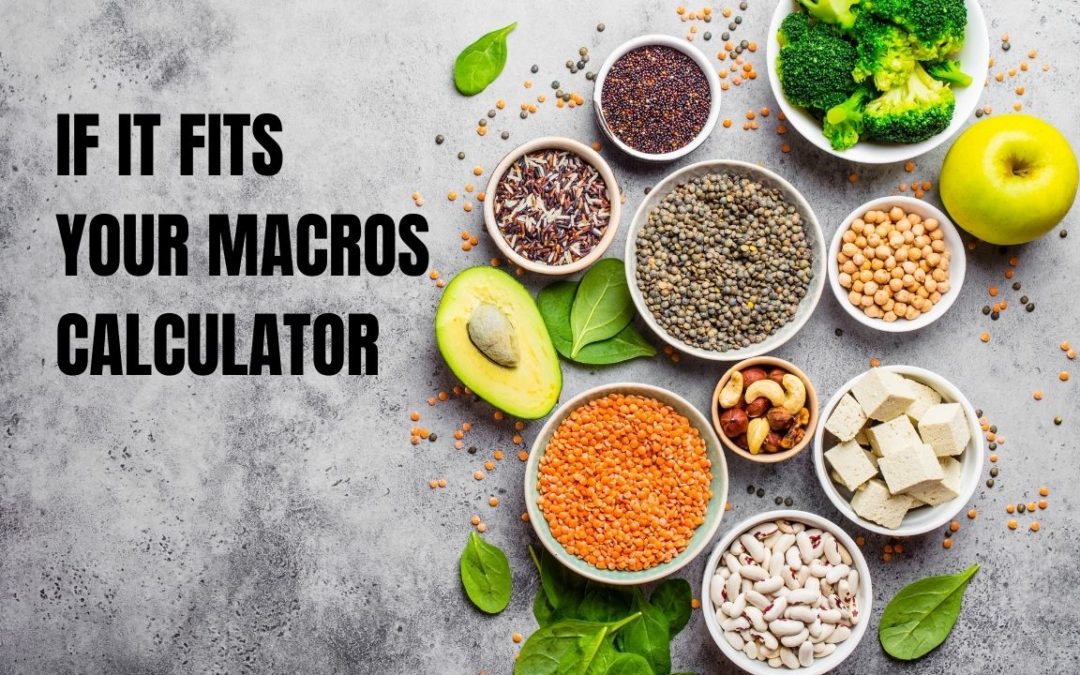Last Updated on March 29, 2022 by TheMealPrepNinja
IIFYM Calculator: Find Your Daily Macros for Optimal Fitness and Health
Calculate IIFYM: If you’re looking to get fit and healthy, you need to make sure that you’re eating the right amount of macros for your body. This can be difficult to figure out on your own, which is why we’ve created this handy IIFYM macro calculator. With this calculator, you can find your optimal daily macros and start seeing results!
What is IIFYM (if it fits your macros)?
IIFYM, or “if it fits your macros,” is a popular nutrition plan that encourages dieters to focus on the nutrient content of their food, rather than the calories. You would still need to know your overall caloric intake to figure out your macros. The idea is that as long as you are eating the right mix of macro-nutrients (protein, fat, and carbohydrates), you can enjoy your favorite foods without guilt.
This flexibility is one of the main attractions of IIFYM, as it allows dieters to indulge in their cravings while still staying on track. Another appeal of IIFYM is that it can be customized to fit each individual’s unique needs. For example, someone who is training for a marathon will have different macro-nutrient requirements than someone who is trying to lose weight.
Macro calculator activity level settings
When it comes to making healthy choices, few things are more important than knowing how many calories you should be consuming each day. While there are a number of ways to estimate your daily calorie needs, one of the most accurate methods is to use a macro calculator or calorie deficit calculator. A macro calculator takes into account a variety of factors, including your age, weight, height, and activity level, in order to give you a personalized estimate of how many calories you need to maintain your current weight.
Additionally, most macro calculators will also allow you to adjust your activity level setting in order to see how many calories you would need to consume in order to lose or gain weight. By using a macro calculator, you can be sure that you’re making the best choices for your body and your health.
If you’re looking to get fit and healthy, you need to make sure that you’re eating the right amount of macros for your body. This can be difficult to figure out on your own, which is why we’ve created this handy IIFYM macro calculator. With this calculator, you can find your optimal daily macros and start seeing results!
How I calculate my macros
First, I used the calculator above to determine how many calories I need to be in a calorie deficit. After doing the calculation, I should be eating around 2300 calories to lose around a pound of fat a week.
Next, I determined that I would like to be in a 45/35/20 percentage. 45% carbs, 35% protein, and 20 percent fat. I used the calculator on my phone. 2300 multiplied by .45 gives me 1,035. Now I divide 1,035 by 4 because there are 4 calories per gram of carbohydrate. This gives me 256 grams of carbs a day I can eat.
2300 calories per day.
carbs: 1,035 calories or 256 grams
Protein: 805 calories or 201 grams
Fat: 460 calories or 51 grams of fat. Please note that there are 9 calories per gram of fat.
My macros are now C/256 P/201 F/51 with a daily intake of 2300 calories.
I also like to use myfitnesspal to track my macros throughout the day.
How to calculate your macros for fat loss?
There are a few different ways to calculate your macros, but the most accurate way is to use a macro calculator. Once you have found a macro calculator, you will need to know your body weight and your activity level. For example, if you are sedentary, you will need fewer calories than someone who is active.
To calculate your macros, you will also need to know how many grams of fat, protein, and carbohydrates you want to consume each day. For example, if you want to consume 2,000 calories per day and you want to eat 50 grams of fat, 35 grams of protein, and 150 grams of carbohydrates, you would enter these numbers into the macro calculator. Dietary fats play a vital role in the human body.
Once you have entered your information into the calculator, hit “calculate” and you will see a breakdown of how many grams of each macronutrient you should eat per day. This information can be helpful in planning your meals and ensuring that you are getting the right mix of nutrients. If you find that you are not meeting your macro-nutrient goals, you can adjust your numbers until you find the right balance for you.
Calculate IIFYM
IIFYM diet, or “if it fits your macros,” is a popular nutrition plan that encourages dieters to focus on the nutrient content of their food, rather than the calories. The idea is that as long as you are eating the right mix of macro-nutrients (protein, fat, and carbohydrates), you can enjoy your favorite foods without guilt. This flexibility is one of the main attractions of IIFYM, as it allows dieters to indulge in their cravings while still staying on track. Another appeal of IIFYM is that it can be customized to fit each individual’s unique needs. It is great to meet your body fat percentage goals.

What should my macros be?
There are a lot of different opinions out there about what the ideal macronutrient split should be, and the answer really depends on your individual goals. If you’re trying to build muscle, you’ll need more protein to support your training.
If you’re trying to lose fat, you’ll need to be in a calorie deficit, which means you may need to adjust your carbohydrate and fat intake. And if you’re just trying to maintain your weight, you’ll need to find an intake that meets your energy needs without causing weight gain.
There are a lot of other online weight loss calculator tools that can help you estimate your macro goals, but it’s always best to work with a Registered Dietitian or Certified Personal Trainer who can help you. They can also help you figure out your body fat and lean body mass.
What are macronutrients?
The term “macronutrient” refers to a category of nutrients that the body needs in large amounts. There are three primary macronutrients: protein, carbohydrates, and fat. Each of these nutrients provides the body with calories (a measure of energy). Protein is essential for the growth and repair of tissues, and it can also be used as a source of energy. Carbohydrates are the body’s main source of energy, and they can be found in foods like bread, rice, pasta, and potatoes. Fat is also an important source of energy, and it helps to absorb vitamins and minerals.
While all three macronutrients are important, the body needs different quantities of each one. For example, carbohydrates should make up about 30-50% of your daily calorie intake, while fat should make up about 20-30%. And protein should account for about 30-45% of your daily calories. It is important to figure out your macro ratio.
What are good macro ratios for fat loss and muscle gain?
When it comes to losing fat and gaining muscle, diet is key. In particular, macronutrients – proteins, fats, and carbohydrates – play a major role in regulating metabolism and supporting the body’s energy needs. For those looking to lose fat, a common goal is to create a calorie deficit by consuming fewer calories than they burn each day.
This can be achieved by reducing carbohydrate and fat intake while maintaining protein intake at a moderate level. For those seeking to gain muscle, on the other hand, a common goal is to consume more calories than they burn each day. This can be done by increasing carbohydrate and protein intake while keeping fat intake relatively low. While there is no one-size-fits-all approach to macro ratios, these general guidelines can help you get started.
When it comes to IIFYM, there are a lot of different opinions out there about what the ideal macro split should be. Some people advocate for a high-protein, low-carbohydrate diet while others recommend a high-fat, low-carbohydrate diet. And still, others believe that a balanced diet of all three macronutrients is the best approach. The truth is, there isn’t one right answer – it really depends on your individual goals. It can depend on your muscle mass and body fat to determine your goals.
If you’re trying to lose weight, you’ll want to be in a calorie deficit, which may mean reducing your carbohydrate and fat intake. And if you’re trying to gain muscle, you’ll need to consume more calories than you burn each day, which may mean increasing your carbohydrate and protein intake. It is always important to eat complex carbohydrates.
Set your protein target
Protein is an essential macronutrient that helps to build and repair muscle tissue, produce hormones and enzymes, and boost immunity. When it comes to achieving your fitness goals, protein plays a key role in helping you to build lean muscle mass and achieve a calorie deficit. For these reasons, it’s important to make sure that you’re getting enough protein in your diet. The amount of protein you need will vary depending on your individual fitness goals, but the general rule of thumb is to consume 0.8-1.2 grams of protein per pound of body weight. If you’re looking to lose weight, you may want to aim for the higher end of this range, as protein has a thermic effect and helps to boost metabolism.

Does flexible dieting work?
Flexible dieting, also known as If It Fits Your Macros (IIFYM), is a popular dieting approach that has gained traction in recent years. The premise of flexible dieting is simple: as long as you hit your daily macro goals for protein, fat, and carbohydrates, you can eat whatever foods you want. This approach stands in contrast to more traditional diets that restrict certain food groups or require meal plans consisting of specific foods.
So, does flexible dieting actually work? The answer may depend on your definition of “working.” On the one hand, flexible dieters are more likely to stick to their diets in the long run because they’re not deprived of their favorite foods. And although flexible dieters may not see the dramatic weight loss results that traditional dieters do, they often experience better overall health and more sustainable weight loss in the long run. It is important to meet your protein requirements and your daily intake.
How do I CALCULATE THE MACROS IN MY FOOD?
The macro diet is a healthy way of eating that emphasizes whole, unprocessed foods. The foundation of the diet is typically fruits, vegetables, lean protein, and healthy fats. But what if you want to calculate the macros in your food? Here’s a quick guide: First, gather all of the food items you want to include in your meal. Next, use an online macro calculator or app to determine the macronutrient content of each item.
Finally, add up the total macros for the meal and divide by the number of servings. This will give you the macro content for each serving. Keep in mind that the macro diet is flexible, so there is no need to be overly rigid with your calculations. As long as you are eating the correct amount of macros and tracking macros. The best part is that you create your diet plan and food choices. There is no need for strict meal plans here.
How to calculate macros per meal?
In order to calculate macros per meal, you will need to know your daily macro goals. To do this, you can use an online macro calculator or speak with a nutritionist. Once you know your daily goals, you will need to divide them into three meals and one snack. For example, if your goal is 2000 calories per day, you would aim for 500-600 calories per meal and 200-300 calories per snack. When it comes to calculating macros, it is also important to consider the timing of your meals.
For instance, if you are trying to lose weight, you may want to eat most of your carbohydrates earlier in the day so that you can burn them off more easily. On the other hand, if you are trying to build muscle, you would want to eat more of your carbohydrates later in the day so that they can be used for energy during your workout.
Adjusting for weight loss or weight gain
When it comes to weight loss or weight gain, the most important factor to consider is energy balance. Energy balance is the relationship between the calories you consume and the calories you burn. If you consume more calories than you burn, you will gain weight. If you burn more calories than you consume, you will lose weight. You can reduce or increase your daily calories by 200 depending on your goals.
When you change your calorie intake you will have to go back and re-calculate your macros because they are based on your calorie intake. If you want to lose weight, you will need to consume fewer calories than your calculated TDEE and therefore eat fewer carbs, protein, and fat. Conversely, if you want to gain weight, you will need to consume more calories than your calculated TDEE and eat more carbs, protein, and fat.

Calculate Your Maintenance Calories
Maintenance calories are the number of calories you need to consume each day to maintain your current weight. To calculate your maintenance calories, start by estimating your basal metabolic rate (BMR), which is the number of calories your body burns at rest. You can use an online BMR calculator or estimate your BMR using the following equation:
For men: BMR = 66 + (6.2 x weight in pounds) + (12.7 x height in inches) – (6.76 x age in years)
For women: BMR = 655 + (4.35 x weight in pounds) + (4.7 x height in inches) – (4.7 x age in years)
Once you have your BMR, you will need to calculate your activity level. Use the following equation to calculate your activity factor:
Activity Factor = BMR x activity level
activity levels
Sedentary (little or no exercise) = BMR x 0.30
Lightly active (light exercise/sports one to three days per week) = BMR x 0.40
Moderately active (moderate exercise/sports three to five days per week) = BMR x 0.50
Very active (hard exercise/sports six to seven days per week) = BMR x 0.60
Extremely active (very hard daily exercise/sports and physical job or training twice a day) = BMR x 0.75
Once you have your activity factor, multiply it by your BMR to calculate your total daily caloric needs.
Now that you know how to calculate macros and calories, you can use the IIFYM calculator to get started on your own macro diet! With a little bit of planning and flexibility, you can reach your fitness and health goals using the IIFYM approach.
This will give you your daily energy expenditure for your body composition. It does not matter if you live a sedentary lifestyle or you enjoy intense exercise. As long as you know what your weight loss tdee is.
FAQ
What is the Iifym calculator?
The If It Fits Your Macros (IIFYM) Macronutrient Calculator is a tool that allows you to track your macronutrient intake. There are three main macronutrients: protein, carbohydrates, and fat. The IIFYM calculator can help you to calculate how much of each macronutrient you need to consume in order to reach your fitness goals.
How do I calculate my macros for weight loss?
When it comes to weight loss, there is no one-size-fits-all approach. However, one key factor that can help you lose weight in a healthy way is ensuring that you are getting the right mix of nutrients.
This means calculating your macronutrients – carbohydrates, proteins, and fats – and making sure that you are consuming the right amount of each. For carbohydrates and proteins, a good rule of thumb is to consume 1 gram per pound of body weight. For fat, you should aim for 0.5 grams per pound of body weight. So, if you weigh 150 pounds, you would need to consume 150 grams of carbohydrates and proteins, and 75 grams of fat each day. Of course, this is just a general guideline.
How do I figure out my maintenance calories?
The number of calories you need to consume each day in order to maintain your current weight is known as your maintenance calorie intake. To calculate your maintenance calories, you will need to know your basal metabolic rate (BMR) and your activity level. Your BMR is the number of calories you burn at rest and is determined by your age, gender, and weight.
You can calculate your BMR using a variety of online calculators. Once you have your BMR and activity level, multiply them together to calculate your total daily caloric needs.
Conclusion – Calculate IIFYM
An IIFYM calculator can help you figure out how many grams of protein, carbs, and fat you need to eat each day to reach your fitness goals. You can also use an IIFYM calculator to track your progress by calculating the number of calories you have burned and the number of macros you have consumed. To lose weight in a healthy way, make sure that you are getting the right mix of nutrients by calculating your macronutrients. Finally, to calculate your maintenance calorie intake, you will need to know your basal metabolic rate (BMR) and your activity level. Multiply these together to calculate your total daily caloric needs.
Use the IIFYM Calculator to help you reach your fitness goals!

Other great articles on IIFYM:
Best Weight Loss Journal that Will Keep You On Track

Jim Lopez, the founder and editor of The Meal Prep Ninja, shares his journey from a passionate bodybuilder and fitness enthusiast to a certified nutrition coach. Certified by Precision Nutrition, Jim aims to empower others with knowledge on meal prep and nutrition, offering resources for busy individuals to enjoy low-calorie, tasty foods. His blog is a community for sharing healthy eating habits and meal prep recipes



